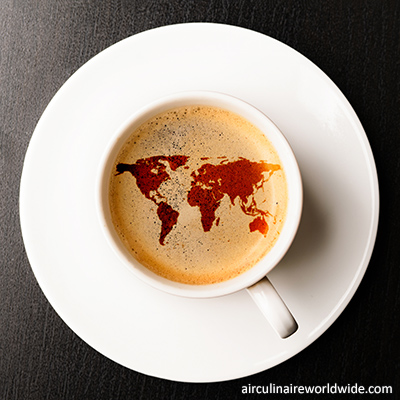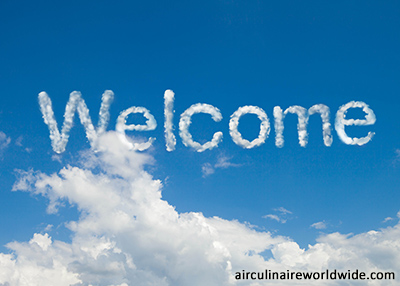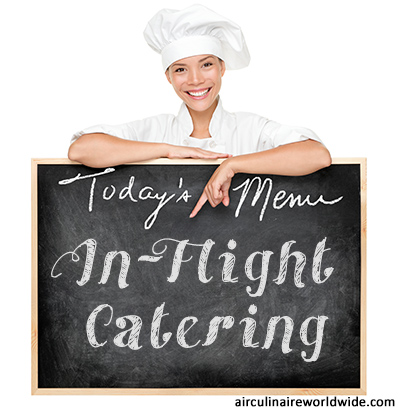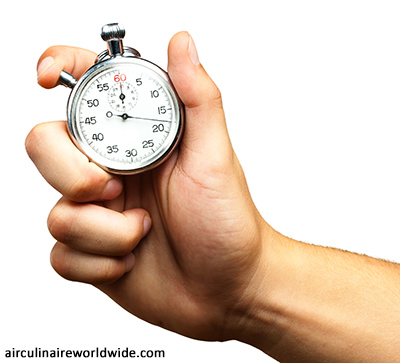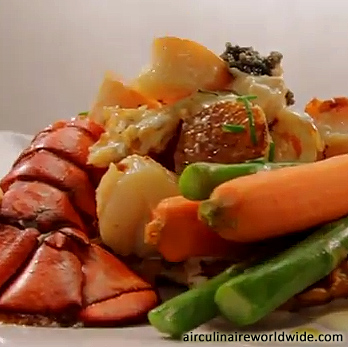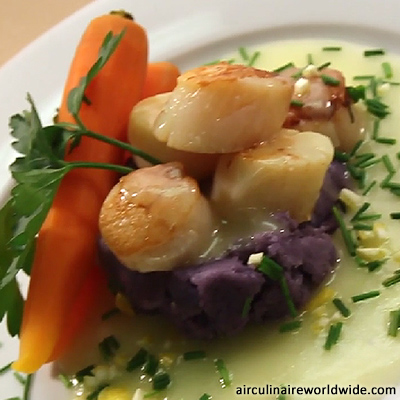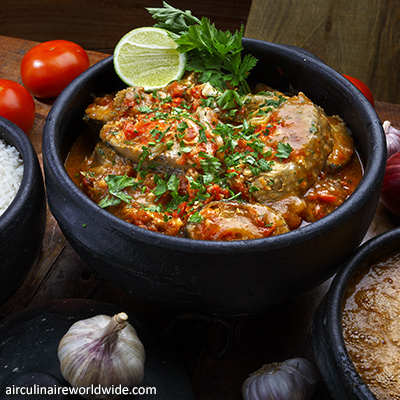Finding gourmet in-flight catering throughout the world can test your problem solving skills. Smaller markets often have limited catering options. Local packaging may not be the best match for your aircraft’s galley equipment or your preferred style of service. Additionally, the presentation and availability of specific products may be quite different from what you’ve grown accustomed to. Finally, orders and revisions may require a significant amount of advance notice in order to ensure a smooth transaction.
In larger markets, great catering options are possible for the well-prepared international cabin crew. Quality catering is also obtainable even in smaller remote markets, simply by planning ahead and conducting research. Working with an experienced caterer or third-party provider, as well as understanding what is available locally will help you plan catering appropriately. Below are the top five considerations to keep in mind when planning in-flight catering throughout a variety of international locations.
1. In-flight catering availability depends on the local market
Gourmet in-flight catering is not readily available at every international destination; even though it may seem like that would be the case. When flying to smaller or remote destinations, keep in mind that the size of the local market typically determines the level of catering available. Smaller markets may have fewer catering options. When flying to remote locations, make sure to talk with your ground handler or experienced 3rd party and take advantage of his or her local expertise in order to determine the best catering options available. Sometimes, you will need to double provision during the previous leg of your trip in order to ensure you have catering available when traveling to more remote locations.
2. Private aviation catering is not standardized across locations
A typical preconceived notion about private aviation catering is that caterers provide the same exact items at every location. Quite the contrary! In fact, each location takes pride in their local flair, so you will not find operations that are like a fast food chain. As you work with one location to the next, you will notice that details such as ingredients, portion sizes, preparation techniques and the presentation may vary.
On one trip, you can order a fruit tray on every leg and get a completely unique result every time. In this example, the fruit will vary based on what is popular, or in season, in that part of the world. A tray with different fruit on it is just a local variation of what was requested.
While it may seem that VIP aviation catering can be obtained from good hotels and restaurants anywhere in the world, this is not always true. Keep in mind that private aviation catering has specific protocols concerning portioning, presentation and packaging which ensures the best in-flight experience possible. Even the smallest towns have places that can make delicious food, but understanding packaging requirements for aviation is often the downfall of the small town supplier. Certain local restaurants are willing to accommodate specific requests, provide concierge services and prepare meals per request. However, this will vary on a case-by-case basis, and you are occasionally limited to ordering from their menu.
3. Some foods may be lost in translation
When traveling internationally, what is typically a simple order can possibly become a challenge. For example, when ordering private aviation catering in China, a hamburger may be presented as a piece of meat on a sweet bun, but it may be a meat other than ground beef, as would be expected in an American hamburger.
Another food with several variants is a favorite among children: a hot dog. Hot dog ingredients can vary widely depending upon which part of the world you are in. Even if a caterer says they have hot dogs, make sure to find out exactly what is in it since they can range from pork, beef, turkey or even tofu. To get the best results when ordering catering in an area you aren’t very familiar with, take into account the local chef’s recommendations and signature items since those items show the chef’s expertise.
4. Determine acceptable alternatives for your passengers
Passengers may have specific requirements and requests, but it is best to be flexible when you are able to in catering requests when traveling abroad. Understand that certain products and brands are only available in certain countries, and know what substitutions your passengers will accept. You will typically receive higher-quality catering if you and your passengers are open to local cuisine since those dishes are specialties of the chef.
If your passengers request certain types of food, such as kosher, halal or specific brands, it is best to manage expectations since these options may not be readily available in location you are flying to. In India, for instance, order vegetarian dishes, poultry or mutton instead of beef due to local cultural and religious reasons. In addition, it is critical to communicate passenger food allergies to the caterer and clearly indicate them on all catering orders since international versions of certain dishes may include unexpected ingredients.
5. Provide ample notice when placing or revising a catering order
To ensure an optimal in-flight catering experience, it is important to place your order far enough in advance to allow the caterer to review the order and source any unusual products. Only certain caterers have the ability to accommodate last-minute catering changes on short notice. Always try to provide a minimum of 48 hours when placing a new aviation catering order, and 24 hours for revisions. If you are in a time crunch, be prepared to work with your caterer and discuss any substitutions which may need to occur. Remember that changing quantities is easier than changing menus, but it is always best to inform the caterer of any changes as soon as possible.
Questions?
If you have any questions about in-flight catering for private jets, contact weborders@airculinaire.com.
